Wattstax
7.8 /10 1 Votes
Initial DVD release September 7, 2004 Duration Language English | 7.8/10 IMDb Genre Documentary, Comedy, Music Country United States | |||||||||||||||||||||||||||||||||
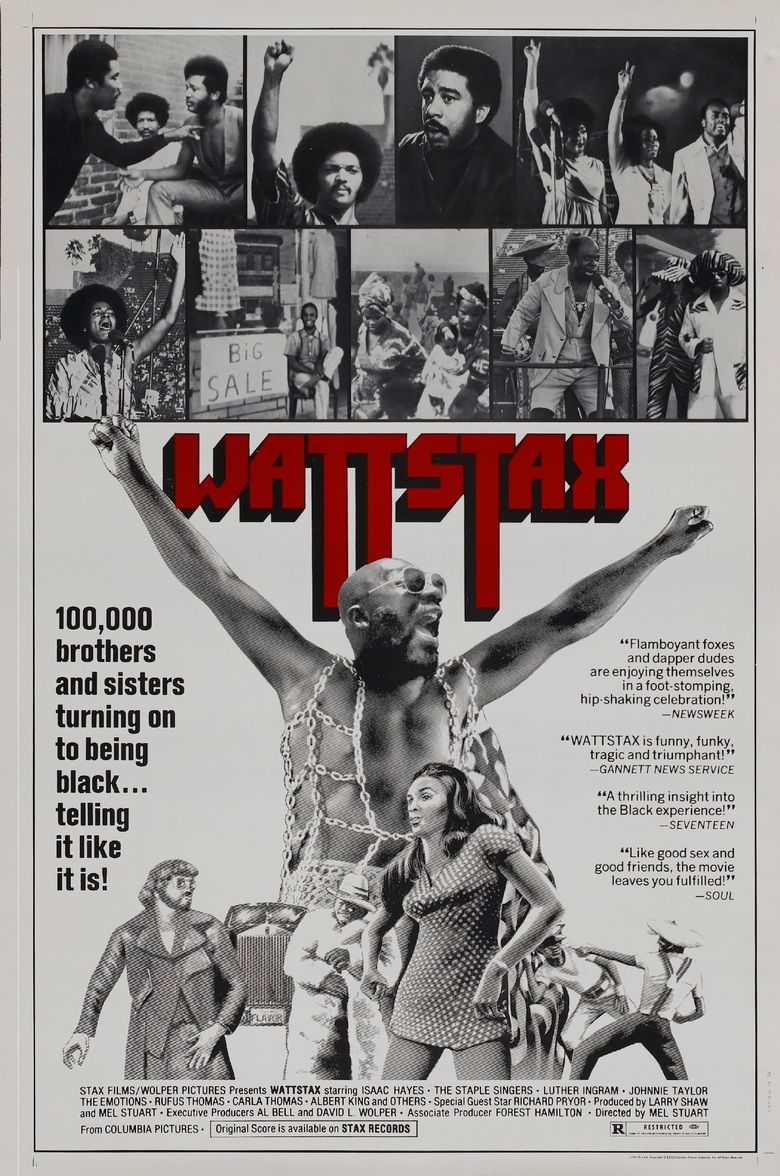 | ||||||||||||||||||||||||||||||||||
Release date February 4, 1973 (1973-02-04) Cast Staple Singers (The Staple Singers), (Himself), (Himself), (Herself), (Himself), (Himself)Similar movies Evanescence: Anywhere But Home , The Red Elvis , Jeff Tweedy: Sunken Treasure: Live in the Pacific Northwest , As I lay Dying: This Is Who We Are , Cradle Of Filth: Pandaemonaeon , Instrument: Ten Years with the Band Fugazi Tagline 100,000 brothers and sisters turning onto being black... and telling it like it is! | ||||||||||||||||||||||||||||||||||
Rufus thomas breakdown funky chicken live wattstax 1973
Wattstax was a benefit concert organized by Stax Records to commemorate the seventh anniversary of the 1965 riots in the African-American community of Watts, Los Angeles. The concert took place at the Los Angeles Memorial Coliseum on August 20, 1972. The concert's performers included all of Stax's prominent artists at the time. The genres of the songs performed included soul, gospel, R&B, blues, funk, and jazz. Months after the festival, Stax released a double LP of the concert's highlights titled Wattstax: The Living Word. The concert was filmed by David L. Wolper's film crew and was made into the 1973 film titled, Wattstax. The film was directed by Mel Stuart and nominated for a Golden Globe award for Best Documentary Film in 1974.
Contents
- Rufus thomas breakdown funky chicken live wattstax 1973
- Isaac hayes shaft wattstax 1973 feat richard pryor
- The idea of a benefit concert
- Word gets out
- Constructing the concert
- The crowd arrives and the festival begins
- Re releases
- Songs in the film
- Other songs in the concert
- Production credits
- References

Isaac hayes shaft wattstax 1973 feat richard pryor
The idea of a benefit concert
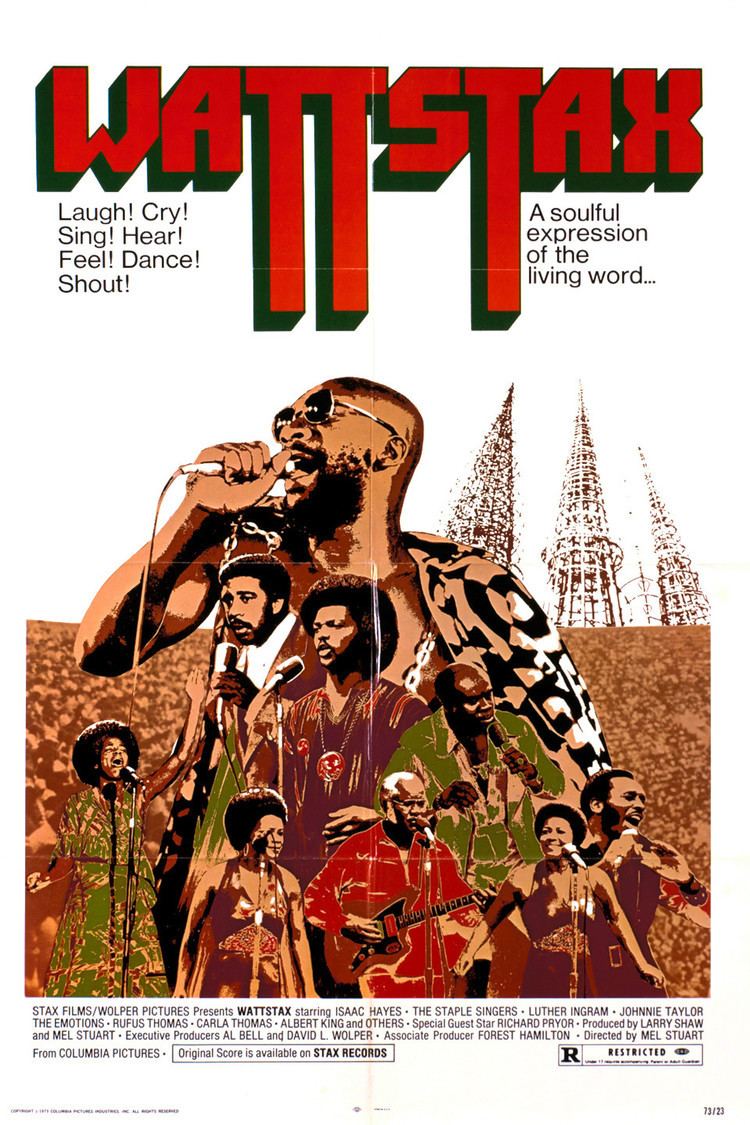
Stax Record's West Coast Director, Forrest Hamilton, came up with the whole concert idea. Being in L.A. during the Watts Riots, Hamilton later became aware of the yearly Watts Summer Festival that commemorated the broken community of Watts, California. Hamilton contacted Stax Records and told them about having a benefit-concert for the 7th Watts Summer Festival. At first, Stax was not so sure on putting together a small concert, with big stars, for a small community such as Watts. Tommy Jacquette, the founder of the Watts Summer Festival, was contacted about the festival idea. With Jacquette being supportive, the concert idea was slowly developing into something big. Al Bell, who was very involved planning the concert, decided that if the festival was going to be as big as he imagines, the festival cannot just be held at a small park in Watts. It had to be held in somewhere big—like the Los Angeles Memorial Coliseum. A team of several Stax directors, including Jacquette, contacted the L.A. Coliseum to schedule a meeting. When the meeting took place, the managers at the Coliseum were not so convinced that "a small record company from Memphis can fill up the whole stadium". This was an expensive risk the Stax team was taking.
Word gets out
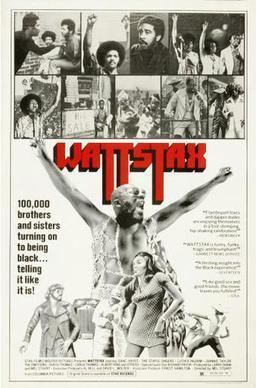
Stax picked a date, which was Isaac Hayes's birthday and also a few days after the 7th anniversary of the Watts Riots. Stax could now print advertisements saying in bold letters: "JOIN US AT THE BIGGEST RECORDING SESSION EVER... IN THE MAKING OF THE GREATEST SOUL ALBUM EVER! WATTSTAX '72 BENEFIT CONCERT." The name of the concert was formed to include "Watts", as in the neighbourhood, and "Stax", the name of the record company putting the show together. As more and more word got out about this big benefit concert, more tickets were being sold. All seats were reserved and only priced at $1.00. Stax wanted to make it possible for anyone to attend, so they made ticket prices cheap. As more and more money was coming in, Al Bell was becoming less and less regretful about putting on the production. The L.A. Coliseum managers could not wait to see what would happen on August 20 at 3:00 p.m. at their stadium.
Constructing the concert
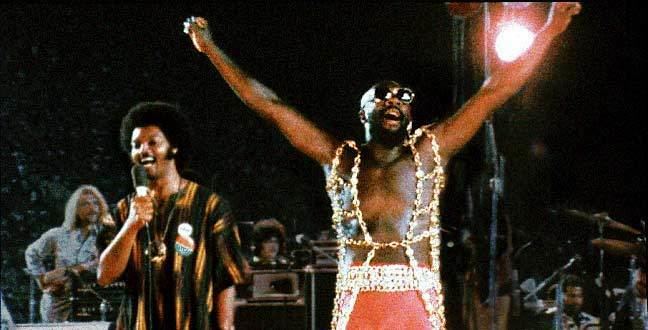
The stage was built the day before the concert in the middle of the night. This conflict happened because a football game was scheduled on the night of August 19. Stax, being polite, did not make the Coliseum-managers cancel the game. Immediately after the football game, trucks full of long wood-planks drove onto the field. The stage was built right in the center of the field and was built high enough where artists could walk/sit under (a little less than 20 feet tall…). A platform was built that lead from the road (where artists would walk from) to the side stairs of the stage. The seats were hand-cleaned and trash was picked up all around the Coliseum... making the stadium look perfect for the next-day's concertgoers. Also, due to the Coliseum's policy, there could be no seating on the field so the grass wouldn't get ruined for football games. Because of this, Stax wondered: "Could each and every seat be occupied?" Since all of this construction was being done late at night, the rest of it was finished the next day. The concert didn't start until 3:00 in the afternoon, so there was all morning to set-up. A big thing to take care of was cleaning the additional bleachers that seated at least 1,000. The bleachers were set-up so that there would be more seating that included a better view of the stage. Next thing to take care of was building a fence around the stage for the artists' safety reasons. Along with that, a large group of L.A.'s African-American policemen were requested to be scattered all around (inside and outside) the Coliseum. Next to do: was taking care of the transportation situation. The dressing rooms for Stax's artists were outside/behind the stadium... kind of far from the stage. Two vans were rented to drive the artists up to the stage and then back to the dressing rooms. Another pricy necessity was the bathroom situation. Portable restrooms were rented (for the artists to use before and after their sets) and placed right under the side of the stage. Lighting was needed since a few of the acts took place at night. Colored lights were hammered onto poles on each corner of the stage. Next to take care of was the speakers. Stax wanted to make sure the whole stadium could hear the music (especially for the people who were sitting far away from the stage.) In each corner of the fenced part of the field were stacked speakers. Right below the stage was a long table which had several open-reel tape recorders. Stax wanted to put the highlights from the concert on records and sell copies. The biggest deal to take care of was filming the whole concert. A film crew was scattered from the top-row of the stadium to the corners of the stage where the artists were zoomed-in-on. The film crew was told to capture the artists singing, but also get shots of the crowd dancing. And lastly, throughout the whole show, the most commotion was communicating over walkie-talkies. As told, the production of the Wattstax Concert was very stressful.
The crowd arrives and the festival begins

At around 1:45 p.m., the Coliseum grounds started to be swarmed with L.A.'s Black population. Guards stamped tickets and told concertgoers where their seats were located. The stadium's seats filled up hastily, while the production-team was making sure everything was good to go. The concert's orchestra (dubbed The Wattstax'72 Orchestra) and its composer, Dale Warren, sat until 2:38 p.m. ready to play their warm-up instrumental titled "Salvation Symphony". At 2:38 p.m., the first song was performed to a crowd of 112,000 (mostly African-American).
Re-releases
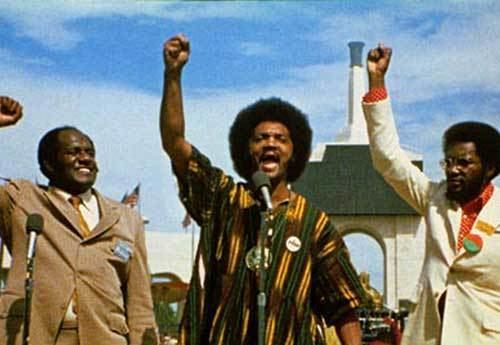
In January 2004, a restored version of the film played at the Sundance Film Festival, followed by a theatrical reissue in June by Sony Pictures Repertory. In September 2004, the PBS series P.O.V. aired a new documentary about the concert and the movie. That same month, the movie was released on DVD by Warner Bros., which obtained the video rights when it purchased the Wolper library (Warner's former sister company, Warner Music Group, coincidentally owns the rights to most pre-1968 Stax recordings).
Songs in the film
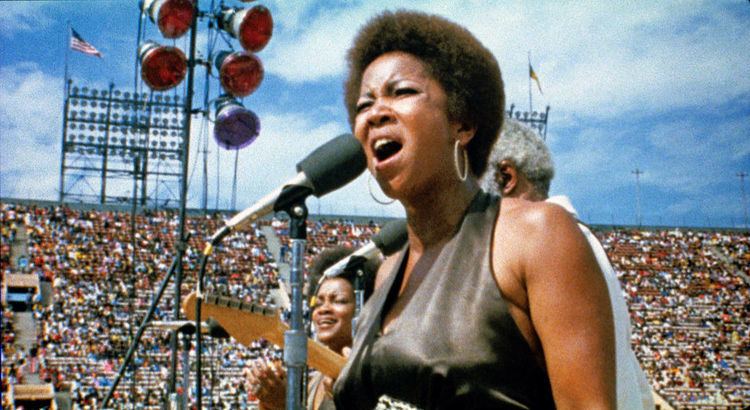
In order of appearance:

Other songs in the concert
Production credits
References
Wattstax WikipediaWattstax IMDb Wattstax themoviedb.org
